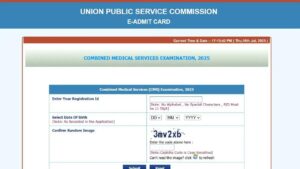Table of Contents
Que 14. Comment on the resource potentials of the long coastline of India and Highlight the status of natural hazard preparedness in these areas. (15m) – Geography
भारत की लंबी तटरेखीय संसाधन क्षमताओं पर टिप्पणी कीजिए और इन क्षेत्रों में प्राकृतिक खतरे की तैयारी की स्थिति पर प्रकाश डालिए।
Introduction:
India’s extensive coastline, stretching over 7,500 kilometres, holds immense resource potential and strategic significance, encompassing fisheries, trade routes, biodiversity, and renewable energy prospects.
Body:
Resource potential of long Indian coastline:
- Fishery and Aquaculture: India ranks 3rd in Fish production in the World.
- Tourism and Recreation: Ex. Goa, Kerala, Andman and Nicobar, 12 Blue Flag to Indian beaches.
- Energy: Off-shore wind energy in Gulf of Mannar, Western Cost: Indented coast is good Location for Tidal energy.
- Mineral Resources: Mumbai High Salt Pan, Toothikudi (TN), India is the third-largest salt producer country after China, the USA.
- Biodiversity and Ecosystem Services: Mangrove (lesser Impact of Tsunami), Coral Reef ( Andaman and Nicobar, Ex. Sundarbans, the largest mangrove forest in the world, safeguards coastal areas from erosion and is a habitat for diverse wildlife.
- Maritime Trade and Transport: Major ports like Mumbai (Textil), Chennai, Kolkata ( Connecting to Sitwe and South-East Asian Countries), Visakhapatnam (Coal Transport), Hajira (Natural gas Transportation)
Status of Natural Hazards preparedness of Indian Coasts
Indian coasts are vulnerable to multiple hazards- sea-level rise, erosion, tsunamis and cyclones and the Indian government has taken several initiatives for hazard preparedness:
- Coastal Regulation Zone Regulations 2019 for protection of the coastal environment.
- Coastal Vulnerability Index by INCOIS to assess the implications of sea-level rise along the Indian coast.
- Integrated Coastal Zone Management Project (ICZMP): for a comprehensive coastal management approach; installation of Geo-Tubes in 500 m (Pentha Village Odisha) to address erosion.
- Tsunami Mitigation and Preparedness: Indian Tsunami Early Warning Centre (ITEWC) by INCOIS
- Cyclone Mitigation: National Cyclone Risk Mitigation Project (NCRMP), structural measures like cyclone shelters in states like Odisha, West Bengal, mangrove conservation in Sundarbans
Conclusion
Conclude by highlighting that as climatic variabilities are becoming the new normal in an increasingly climate-constrained world, all stakeholders (government, coastal communities, businesses) should contribute towards inclusive coastal management.
Check out the UPSC Mains GS Paper 1 2023 Analysis with detailed expatiation of the topics of Mains GS Paper 1 By the Study IQ Experts.


 UPSC CMS Admit Card 2025 Out: Download L...
UPSC CMS Admit Card 2025 Out: Download L...
 UPSC Study Material for Prelims & Ma...
UPSC Study Material for Prelims & Ma...
 NATO Countries List 2025, Members, Funct...
NATO Countries List 2025, Members, Funct...





















